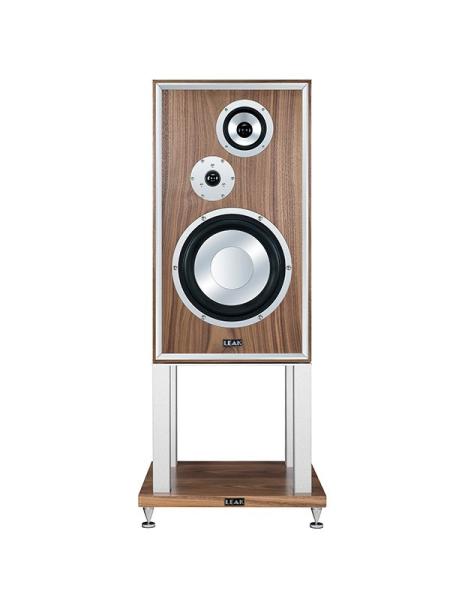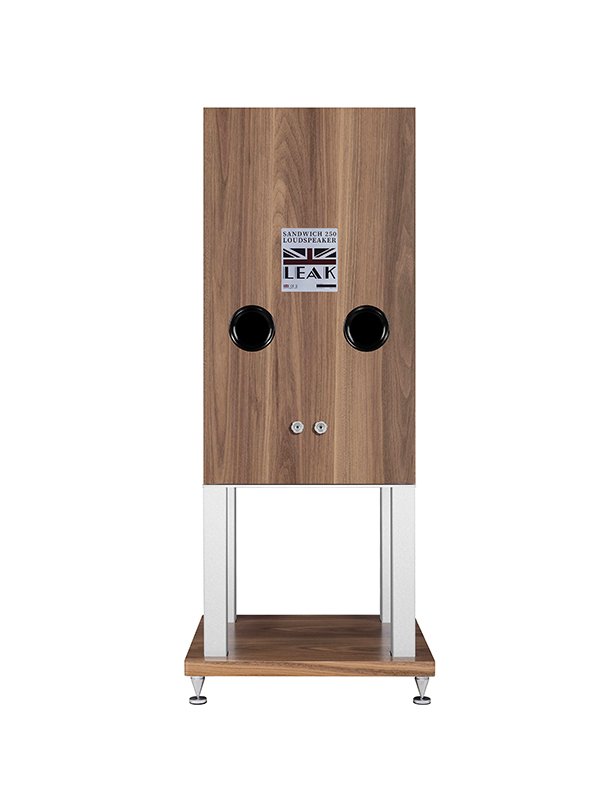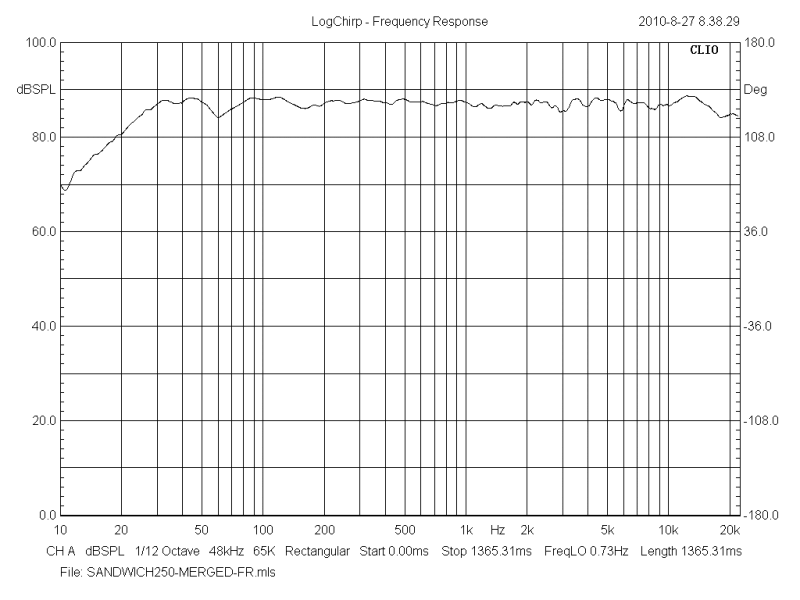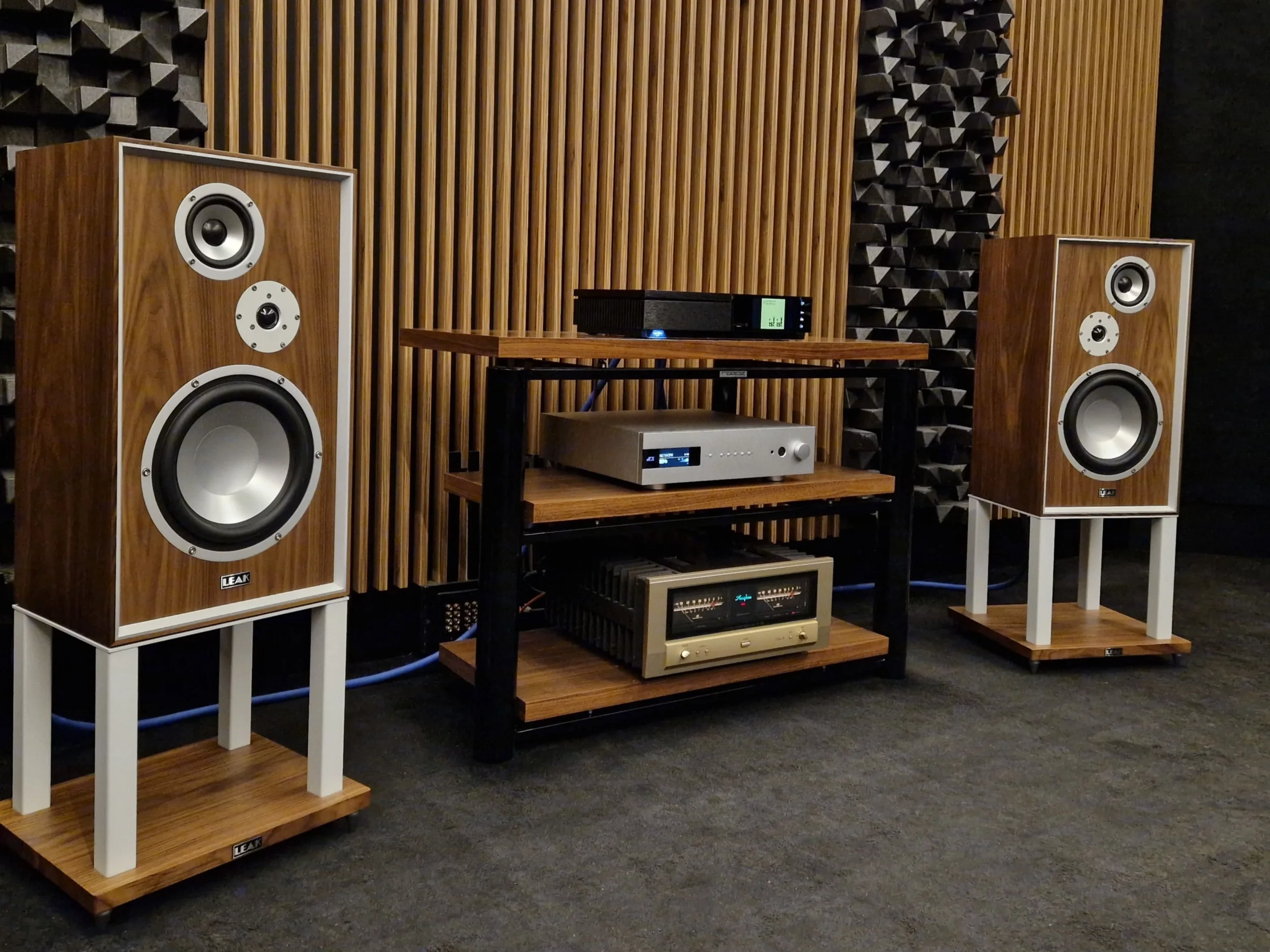The Leak Sandwich 250 brings back the designs that Leak & Co. made in 1961 with the original Leak Sandwich, and it is a great example of how to bring an old-school speaker into the modern HiFi era. In this article, we will review the Sandwich 250 and talk about its design and innovative technology.
Leak Audio was founded in 1934, and at that time, it was called H.J. Leak & CO. It was based in London, and it quickly became popular for making high-quality, affordable amplifiers and loudspeakers. When the founder, Harold Joseph Leak, passed away in 1979, Leak & Co. closed down.
In 2020, on Harold Joseph Leak’s 113th birthday anniversary, the IAG (International Audio Group) brought back Leak Audio, bringing the vintage Leak & Co look back to HiFi. In 2025, Leak Audio is one of the best brands to get an amplifier, loudspeaker, or turntable from, and their products are a good addition to any speaker system.
Leak Sandwich 250 Review
Design
The Leak Sandwich 250 is a three-way, rear-ported loudspeaker. It has one 11-inch bass driver, a 1-inch soft dome tweeter, and one 4 ¼ inch midrange driver. The cabinet is dual ported, and it has a combined frequency response of 42 Hz – 26 kHz. These loudspeakers have the classic Leak Audio design, with a walnut, real wood veneer cabinet with aluminum trims.

The Sandwich 250 is a relatively large speaker, this means that it needs to be placed on a stand to get good results. There is a dedicated stand for these loudspeakers, but they are sold separately. The loudspeakers will cost you US$2795 without the stands and US$3495 with them. The speakers come with a decorative grille cloth, which matches the walnut finish and also maintains acoustic transparency to the maximum.
The Leak Sandwich 250 gets its name from the stiff aluminum skin cone design that Leak uses, which is bonded to a thick core of a polymethacrylimide (PMI) based structural foam, often used in aerospace and automotive industries.
This means the Leak Sandwich cone reproduces the signal applied to the voice coil, totally free from mechanical break-up and its associated distortions. The result is a remarkably smooth frequency response, free from violent peaks or troughs over a very broad frequency range, indicative of an excellent, transient response.
The speaker cabinet was designed with acoustic performance in mind. The structure consists of a composition of MDF and composite board, thus creating a second ‘sandwich’ reference, with the boards layered for optimum cabinet strength.

While the new cabinet fuses intelligent bracing with this ‘sandwich’ of materials, it also maintains a specific front-rear bracing, with the distinct, visible countersunk screw on the rear – a famous trait of the original Leak Sandwich.
The drivers of the Leak Sandwich 250 incorporate a rear chamber damped to absorb the output from the back of the dome. This isolates the HF unit from the rest of the loudspeaker, and it has the added benefit of reducing the resonant frequency of the treble unit.
Taking the resonant frequency below the crossover region means the audible spectrum of the bass, mid, and high frequencies can be sewn together with an added dimension of detail and harmonics, eliminating the requirement to harshly adjust the definition of the high-frequencies.
Setting Up The Leak Sandwich 250
Leak recommends leaving the cloth grilles on for better dispersion, but I couldn’t hear that much of a difference. With regards to speaker placement, I just followed the user manual, and I got the best sound from those measurements. I did tilt the speakers very slightly towards my listening position, and I found that it helped with the center imaging and soundstage.

The Leak Sandwich 250 has a nominal impedance of 6 ohms, which means that it is not hard to drive this speaker. However, more power will still mean better performance. I paired the Sandwich 250s with the Leak Audio Stereo 230 integrated amplifier, and it had no problems driving the loudspeakers.
Sound Quality
The Leak Sandwich 250 loudspeakers sounded fantastic. The tone was neutral, and the bass was more than enough for me. It went well below 40 Hz during our testing, and it was deep and detailed. The midrange was also neutral, which is thanks to the aluminum cone and the front baffles.

The soundstage was great. I talked about it before, and I’ll say it again. If you just slightly tilt these speakers towards your listening position, the soundstage and imaging will become very detailed. The Dune: Part 2 soundtrack was so immersive, Paul’s speech had me shaking in my room.
As far as intelligibility goes, you will see the lack of it immediately in some cases. The Sandwich 250s won’t save poor tracks or whispered dialogues, but I found that a good amplifier can improve that sound.
Verdict
The Leak Sandwich 250 loudspeakers masterfully blend vintage aesthetics with modern acoustic engineering, delivering impressive performance. With neutral tonality, and an immersive soundstage (especially when slightly angled toward the listener), these walnut-veneered speakers offer exceptional value for audiophiles seeking high-quality sound reproduction without being overly difficult to drive thanks to their 6-ohm impedance—truly a worthy continuation of Leak’s storied legacy that proves IAG’s revival of the brand has resulted in products that honor the past while embracing contemporary audio standards.
